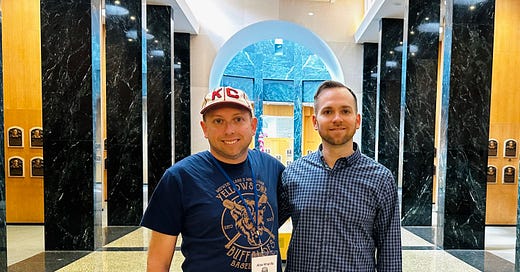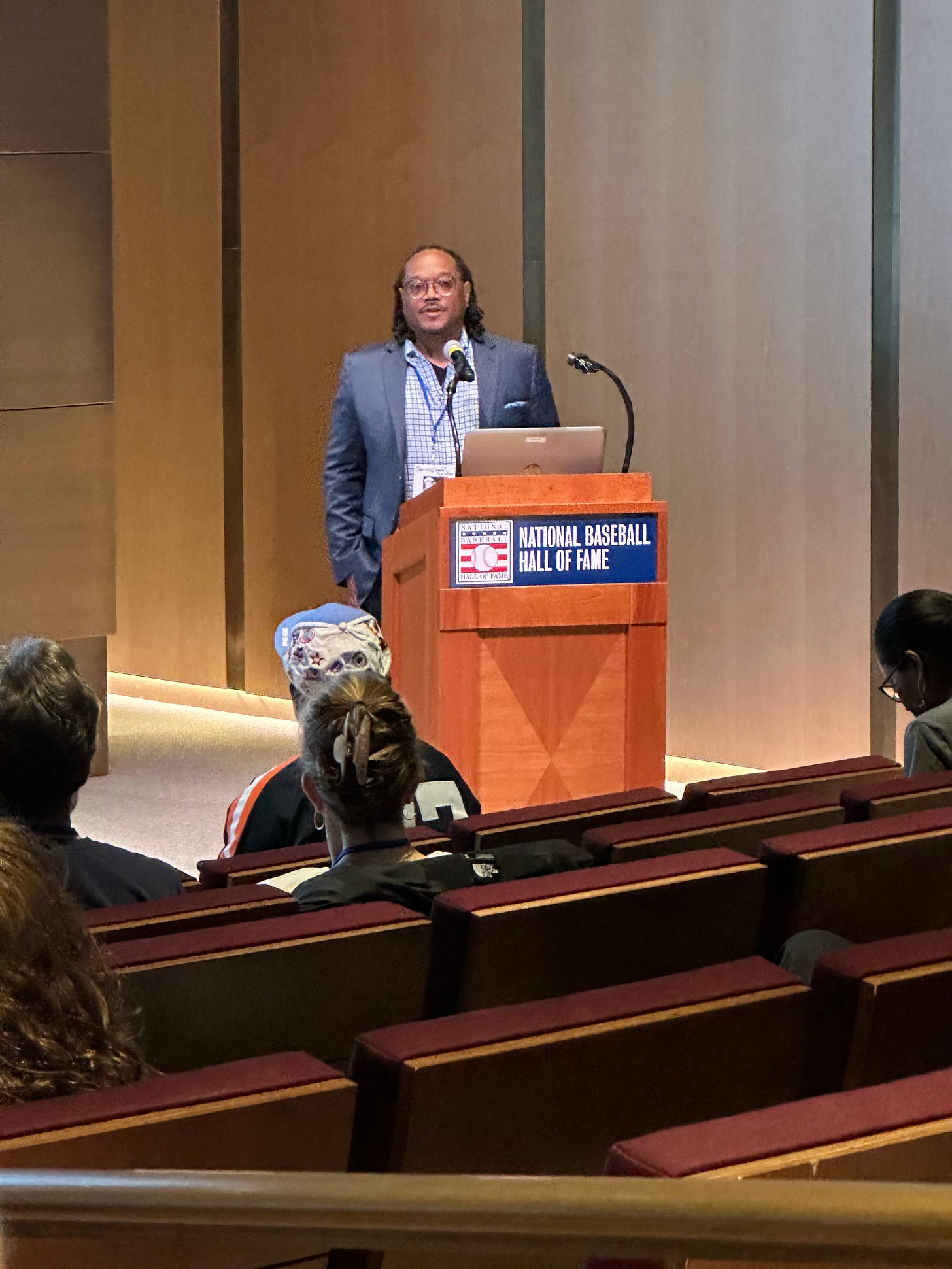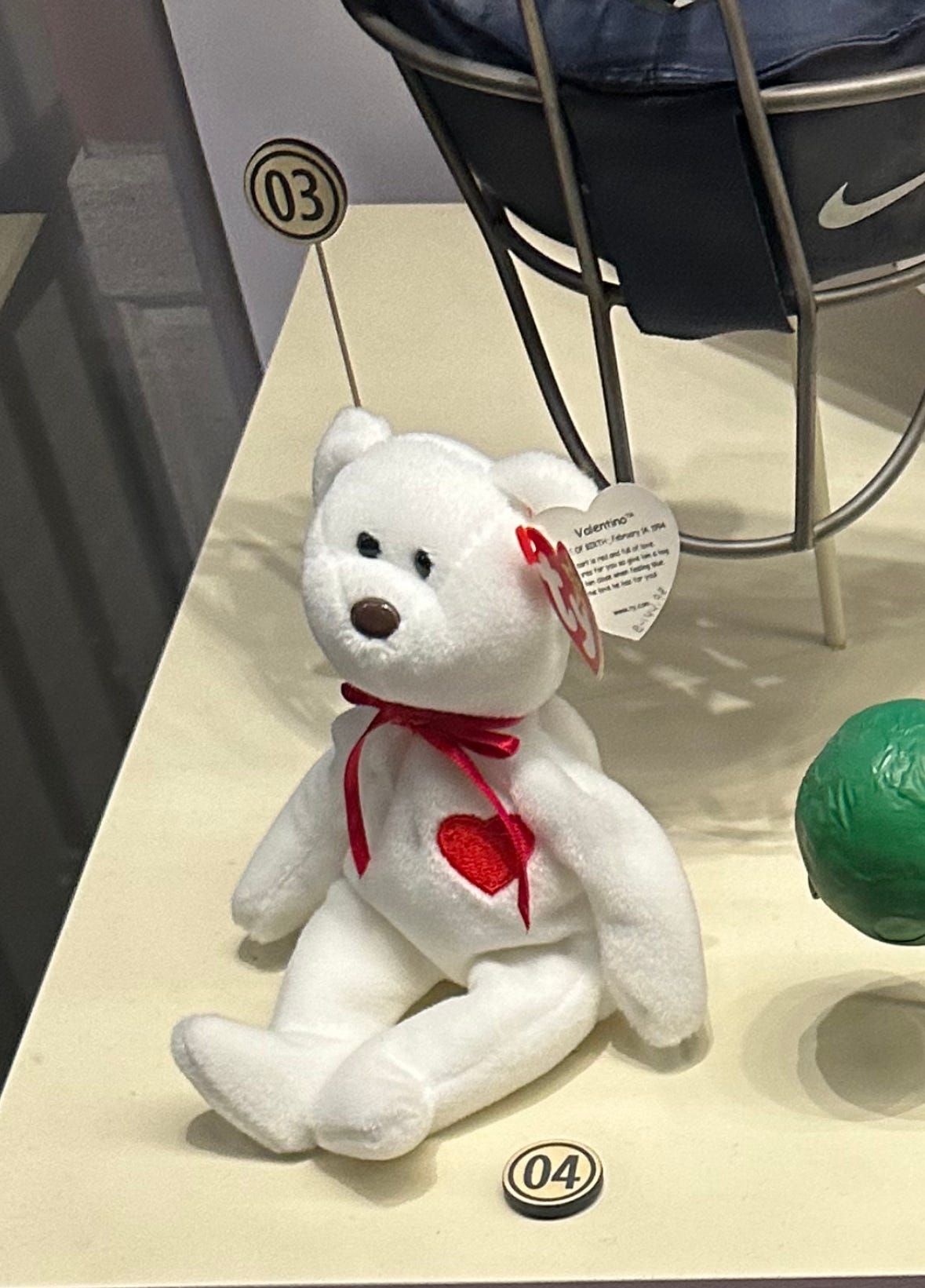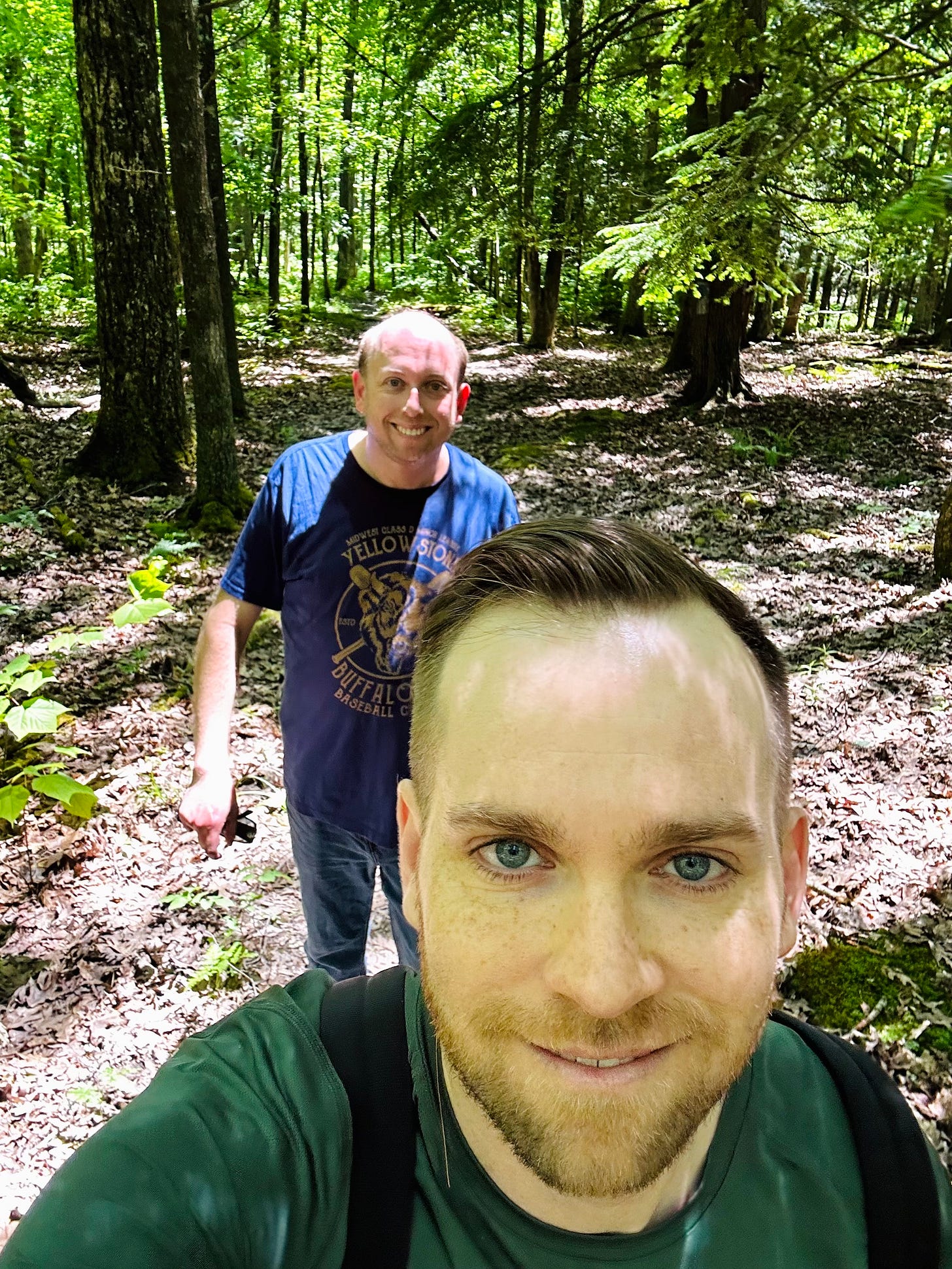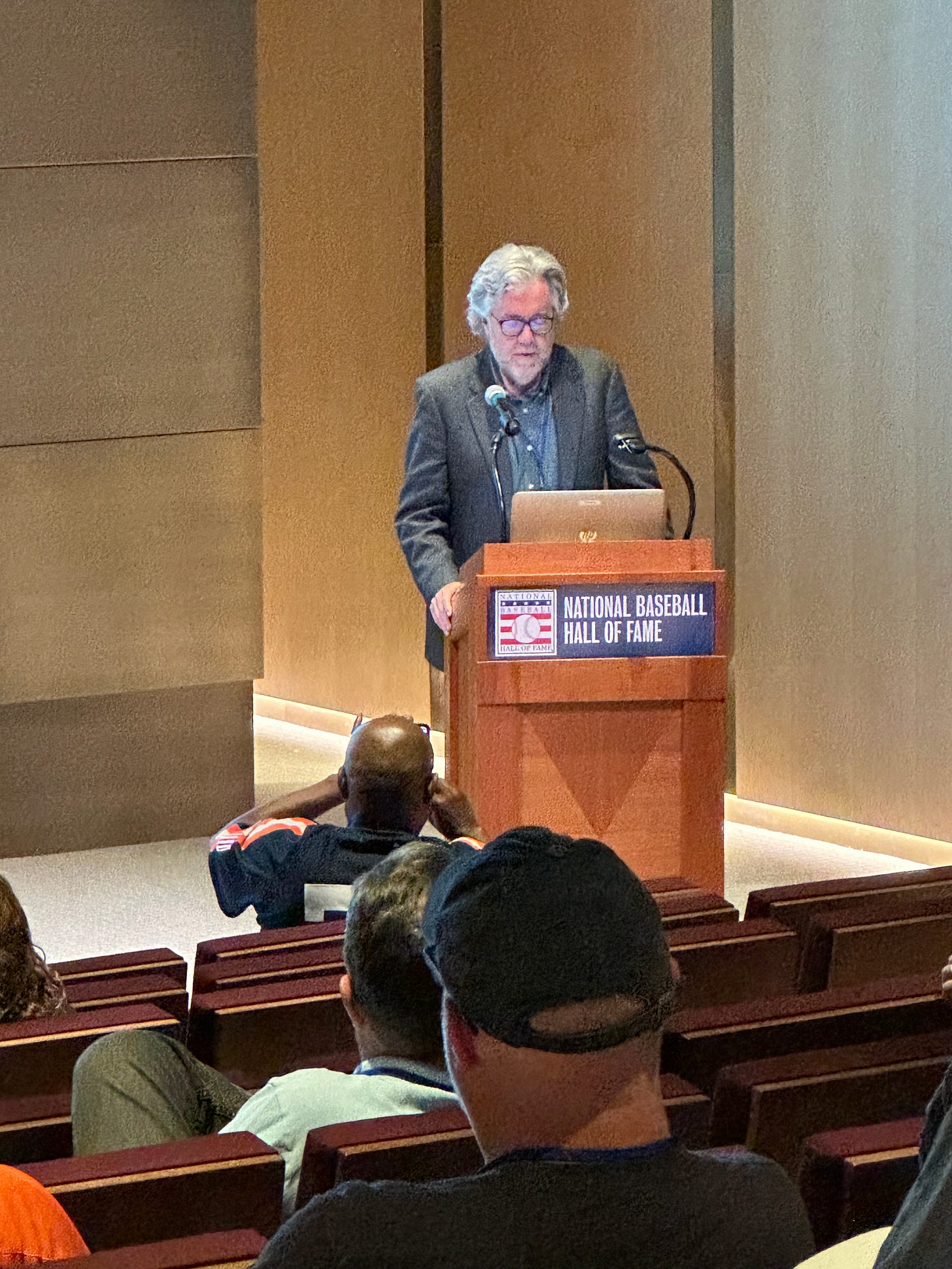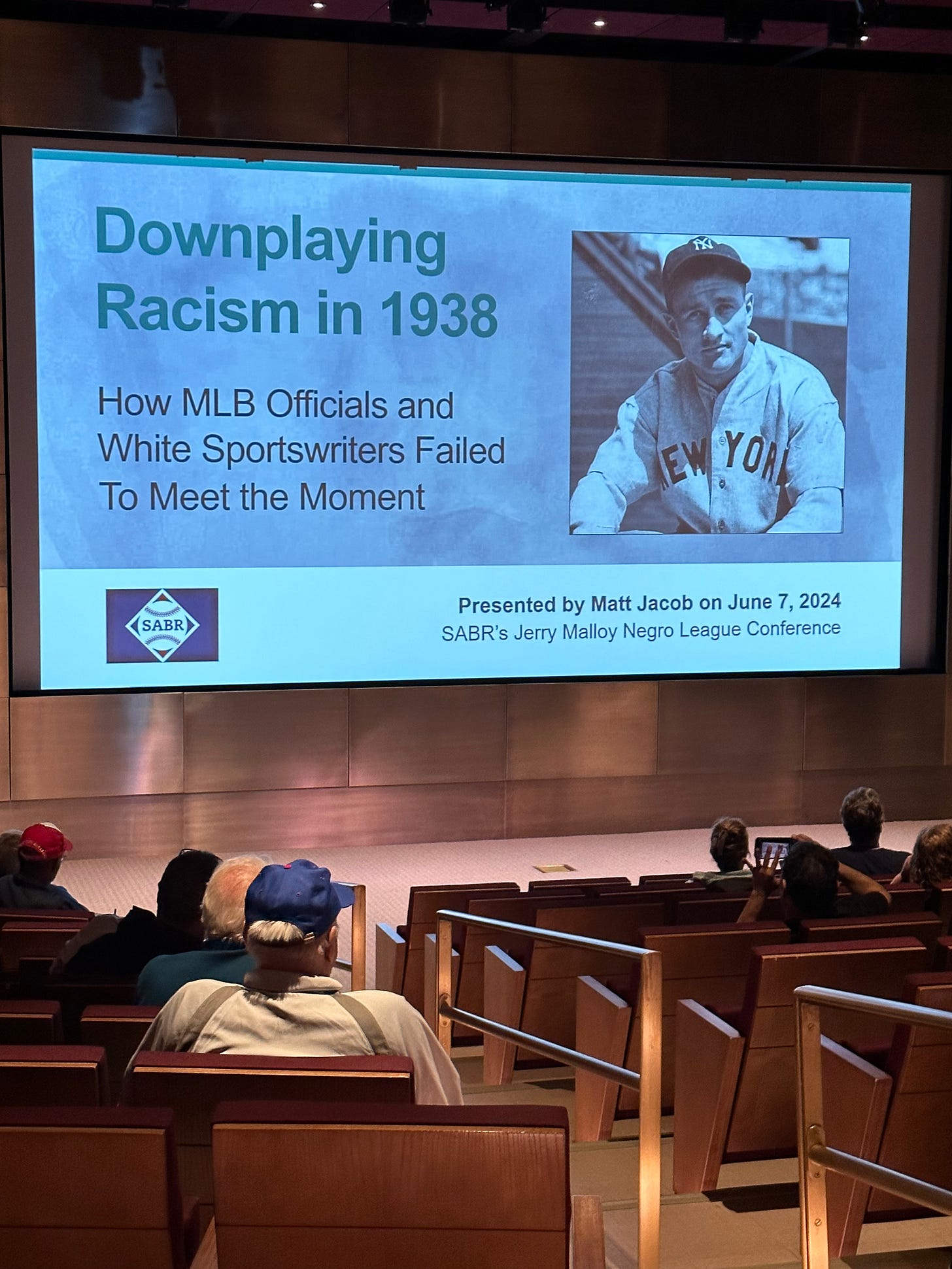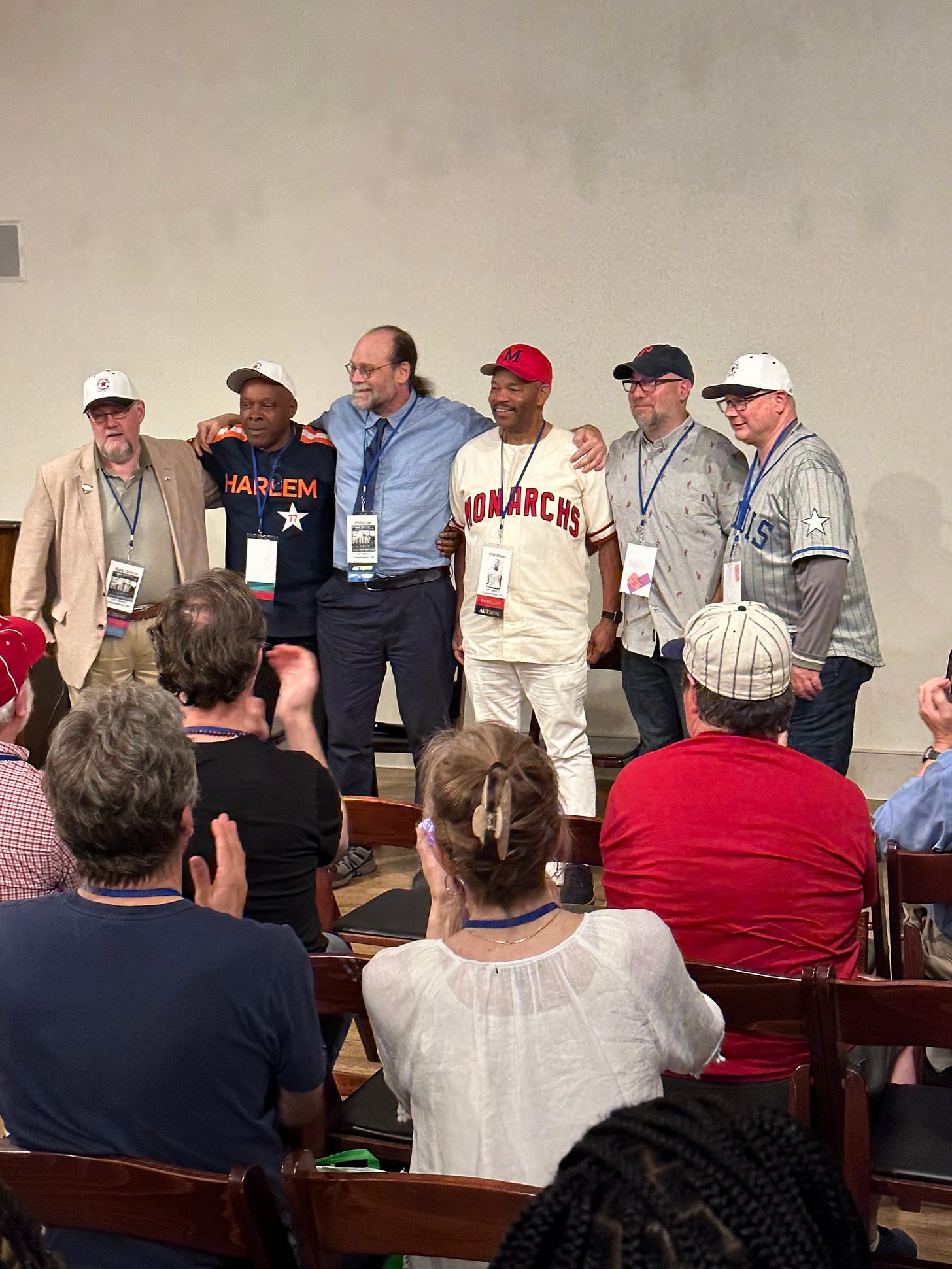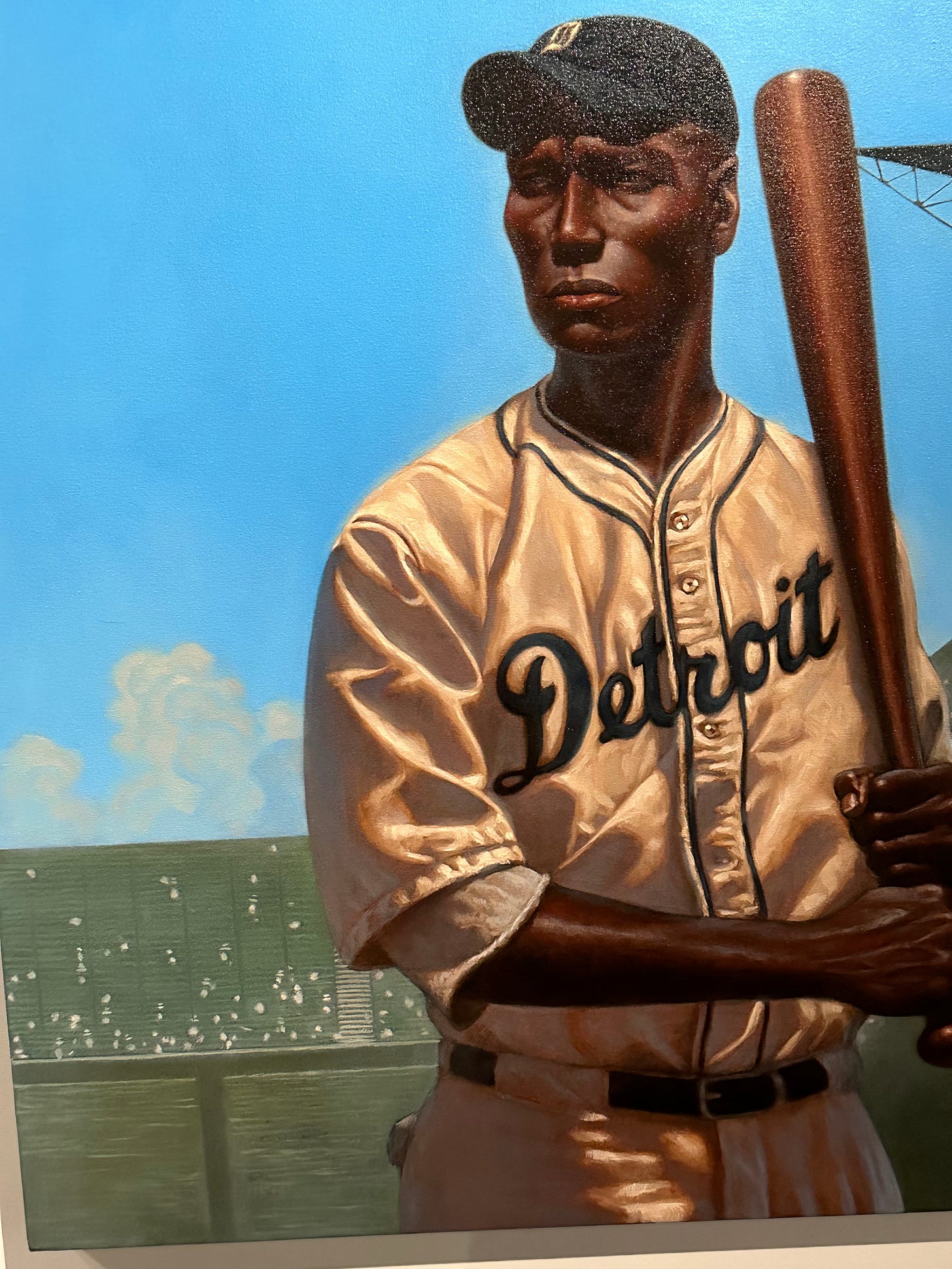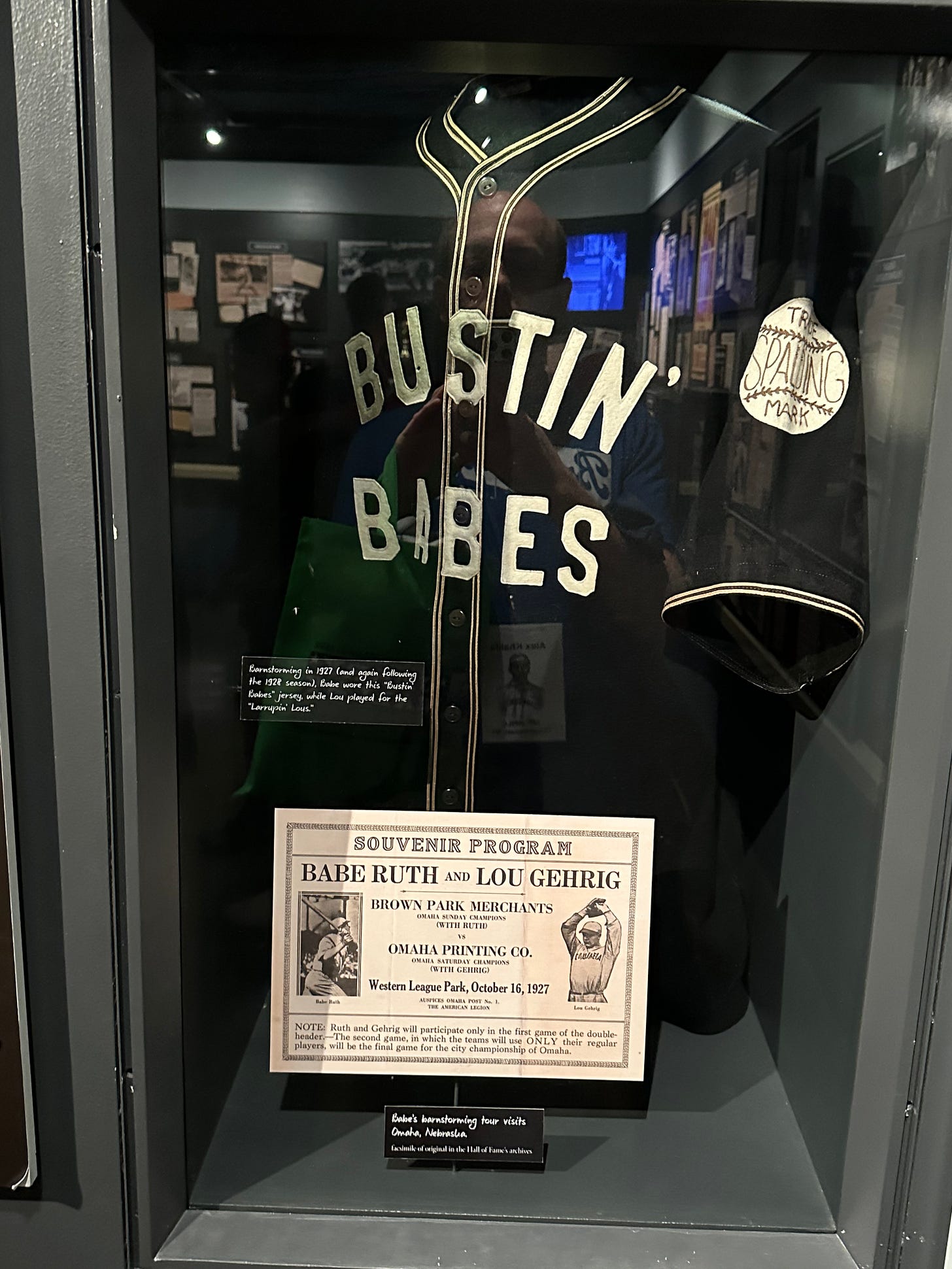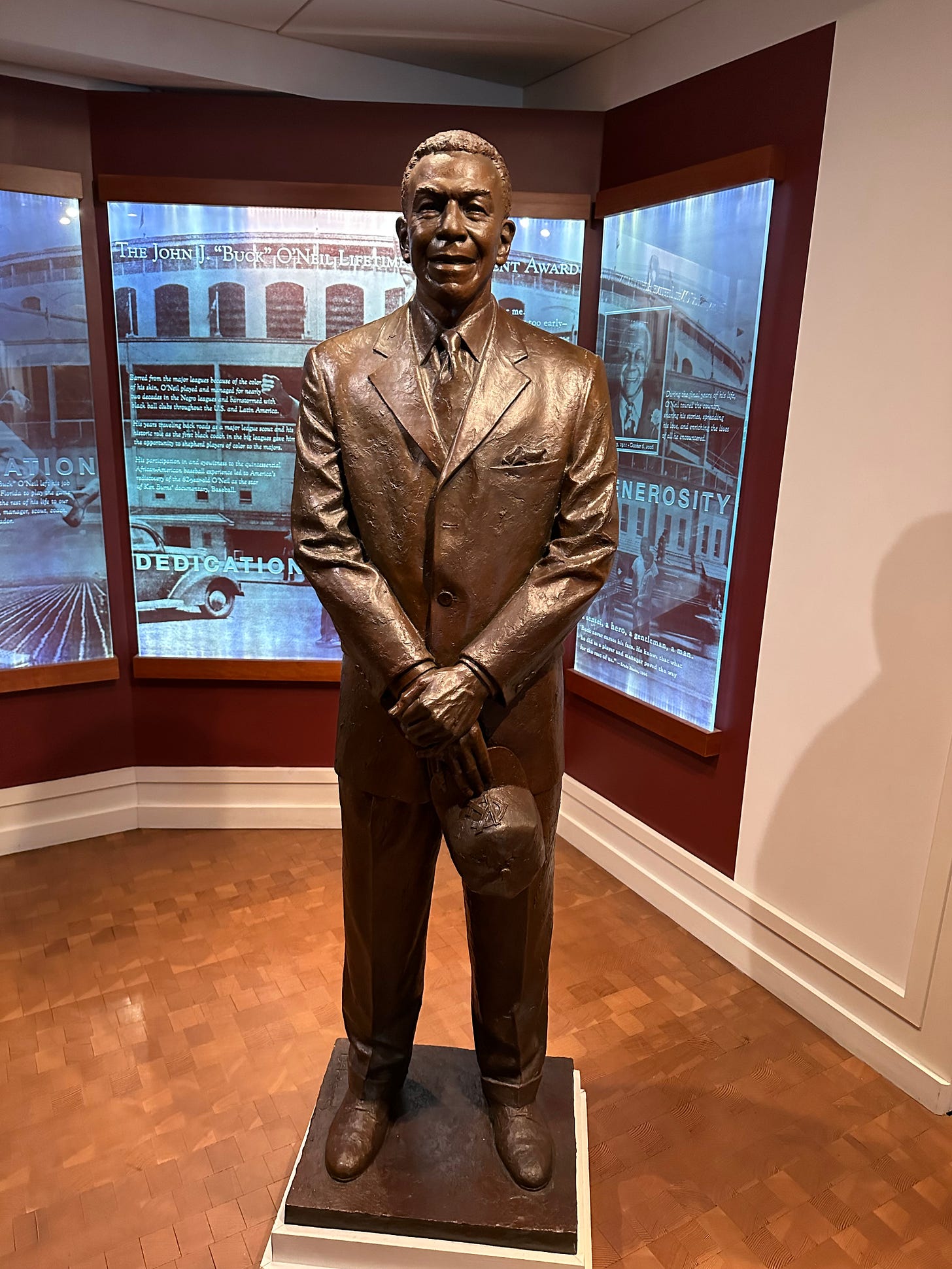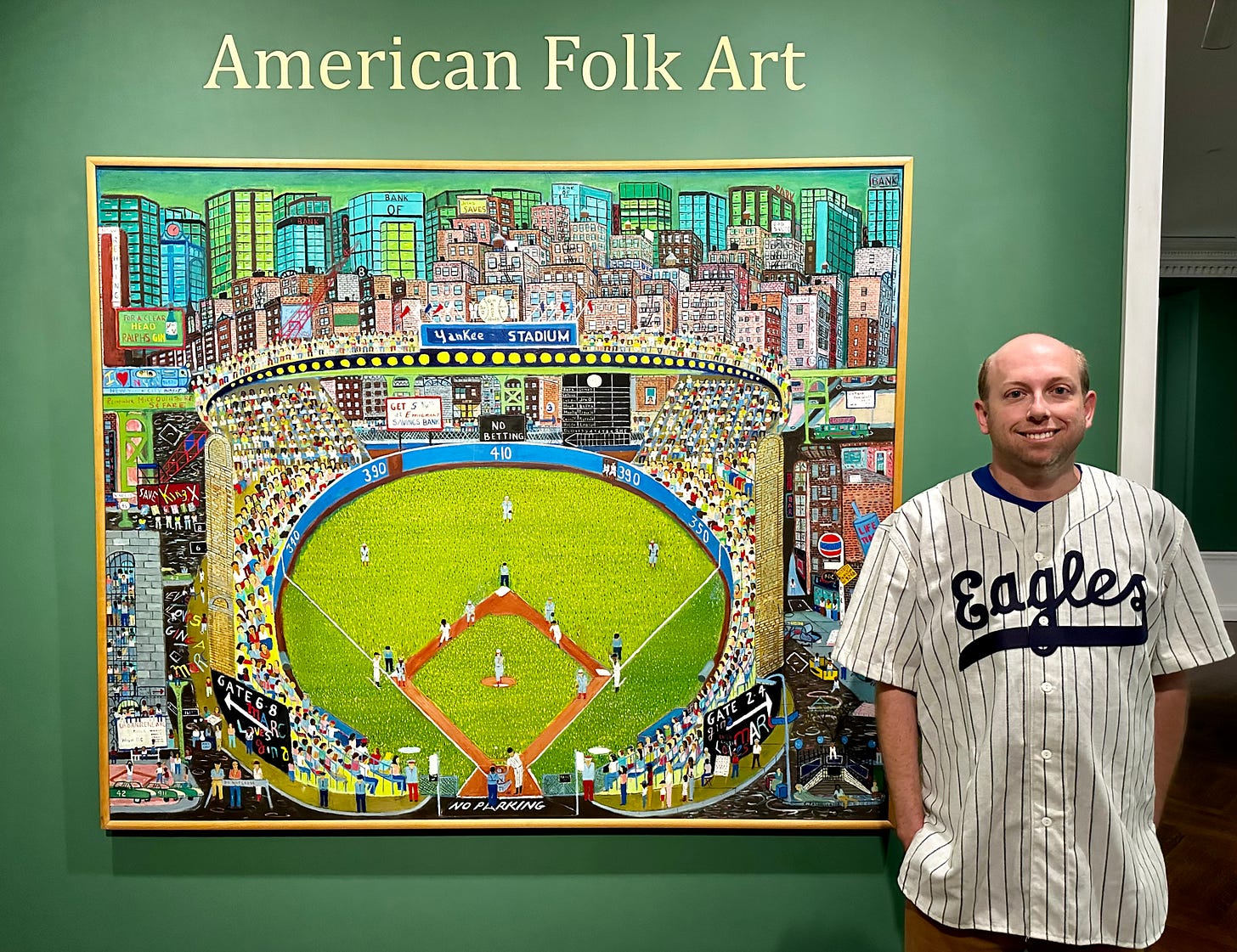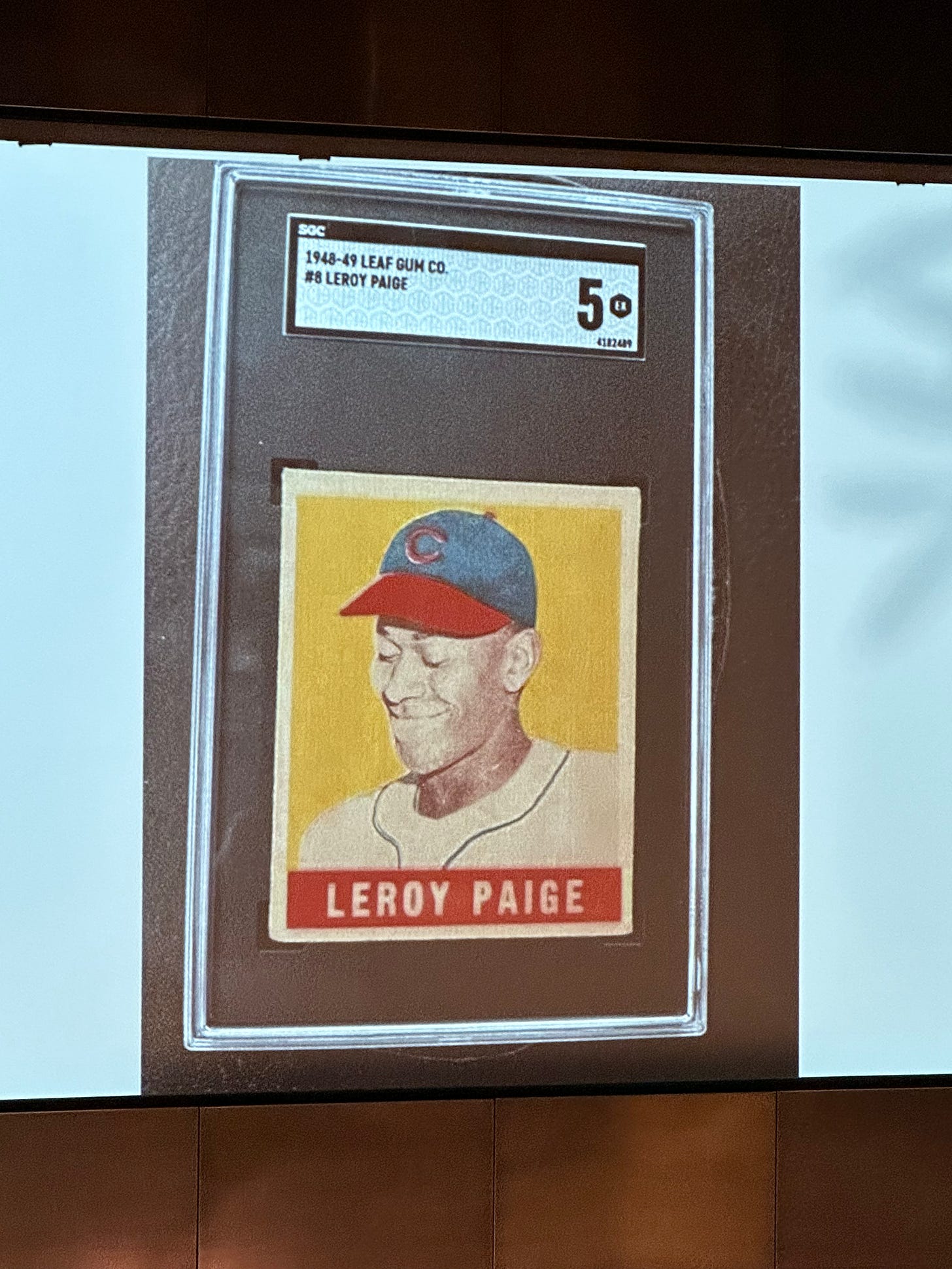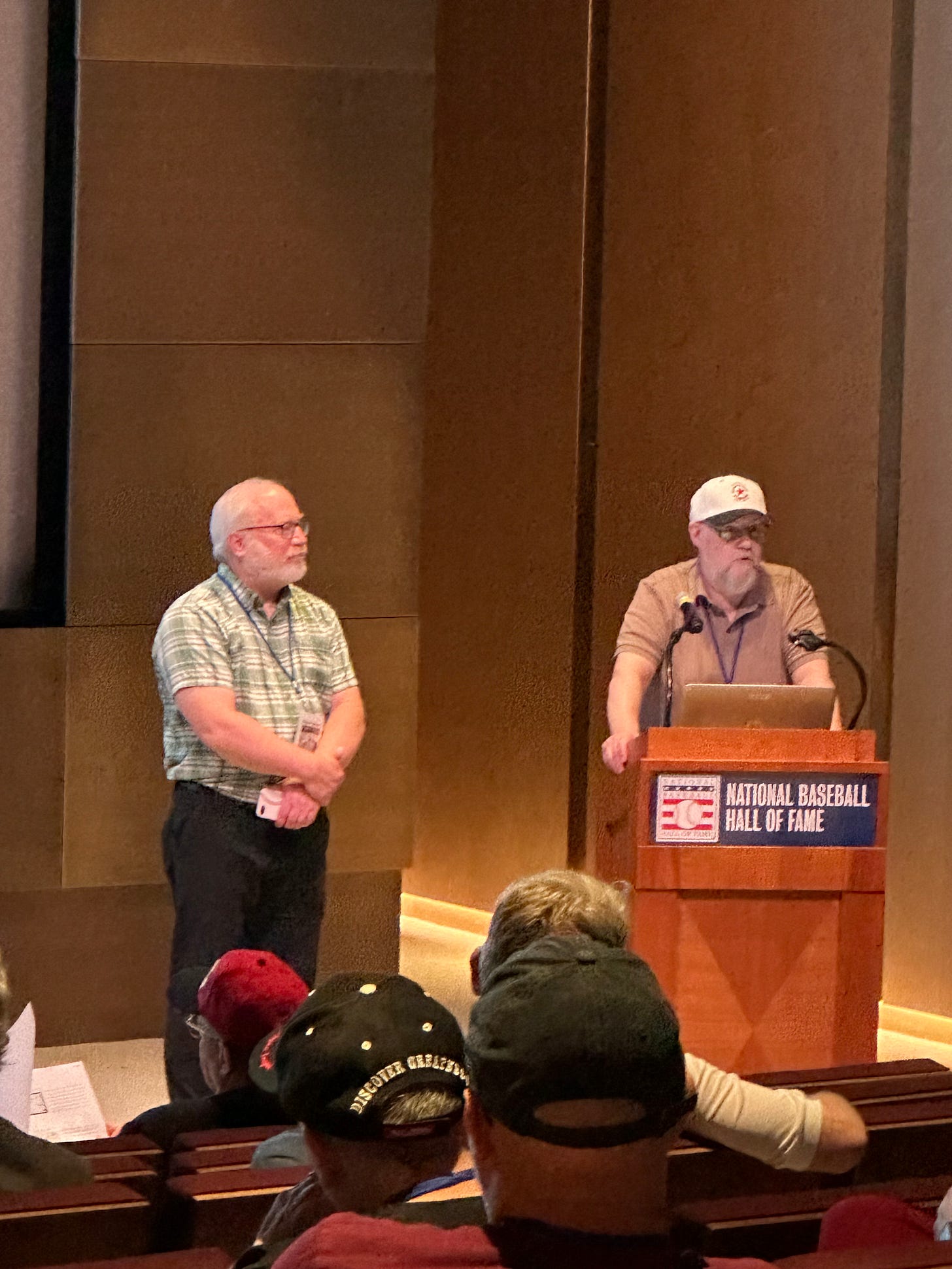Friday morning started with French toast, bacon, sausage, and a fruit parfait. Patti had been hard at work in the kitchen. Our guests at breakfast were a mother and son who also attended the conference. We explained that neither of us had set foot in the Hall of Fame since we were young and visited with our parents, although I did recall having seen a few exhibits back then.
One of the morning seminars, hosted by Clarence Gordon Jr., discussed African American baseball participation in the present day. It was a bit of a changeup compared to most presentations which focused on baseball history. Nevertheless, it’s an important topic when examining the impact the Negro Leagues have had on society.
The Centennial panel included presentations by Paul Julion, Tim Hagerty, and Ted Knorr. Hagerty, a writer and announcer, made the Hall of Fame case for pitcher Dick “Cannonball” Redding. I happen to own a Redding bobblehead. Knorr spoke about Herbert “Rap” Dixon, one of the finest Negro League hitters not yet in the Hall. When I asked where the nickname came from, Knorr explained that it was either a reference to the Rappahannock River or simply a nod to his hitting prowess. The next day, Robert Fitzpatrick would also sing Dixon’s praises in his presentation covering the 1929 Baltimore Black Sox. Perhaps one day Dixon will join legendary executive Rube Foster in the Hall.
Julion highlighted John Donaldson, who both pitched and played in the outfield beginning in pre-Negro Leagues times. Alan Cohen’s talk helped the audience understand Josh Gibson’s incredible home run power. Just before lunch, Jon Volkmer discussed his novel Brave in Season in which black railroad workers play against a squad from a small town in Nebraska. Volkmer had been kind enough to take our photo the night before. What’s more, I noticed a “Valentino” Beanie Baby giveaway item from May 17, 1998 when David Wells pitched a perfect game at Yankee Stadium. That was one of the most memorable games I have ever watched on television.
In the afternoon, Justin proposed a hike at nearby Glimmerglass State Park. After a moderately steep beginning of the trail, the going got easier and I felt at one with the forest. It was a bit reminiscent of my time growing up in Connecticut when nature walks were commonplace. We emerged from the woods in a different place than we entered and stumbled upon historic Hyde Hall, a museum that began as a country house in the 1830s.
I was excited to return to the Grandstand Theater for a talk given by Mark Armour. I remembered his appearances on the SABRcast podcast and mentioned that I enjoyed those episodes when I finally got to meet him. Armour modestly explained that he fills in when host Rob Neyer needs a guest. In truth, he’s an accomplished writer and penned a biography of shortstop Joe Cronin in 2010. Armour’s informative talk touched on the machinations behind inducting superstar pitcher Satchel Paige into the Hall. Missy Booker would give a presentation about Paige the following morning.
The final presentation of the day dealt with Jake Powell, an outfielder who became infamous for using a racial slur during a live radio interview in 1938. Despite his heroics for the Yankees in the 1936 World Series, Powell’s life story was a sad one. Also unfortunate was the fact that not enough members of the media were critical of his intolerance. According to presenter Matt Jacob, it was a reflection of the bigoted attitudes of the white baseball establishment leading up to integration. That led to the exclusion of many Afro-Latino players as well. Filmmaker Max Martinez Almenas then focused on his family’s baseball history. That included the career of Horacio “Rabbit” Martinez who hailed from the Dominican Republic. The Negro Leagues star even played against Babe Ruth on one occasion.
After enjoying Indian food at Norbu, we made our way to Templeton Hall. The place was jammed for the evening’s event which began with speaker Philip Lee. Lee wrote Black Stats Matter as an homage to Negro Leagues players. Afterward, a panel spoke about the process behind integrating Negro League statistics into the MLB record book. For example, the researchers had to make decisions about what black teams (such as those in the Negro Southern League) should be considered minor league caliber. One of the panelists was Phil S. Dixon, who put together The Negro Baseball Leagues: A Photographic History which I read prior to attending. Moderator Gary Gillette appears at left, while Dixon wore a Monarchs jersey.
Saturday marked the final conference day, so we decided to browse the Hall exhibits in the morning. There are areas devoted to baseball movies, famous broadcasters, and even the ballparks themselves. One of my favorite pieces of baseball art was Kadir Nelson’s painting of Detroit Stars standout Turkey Stearnes. It’s inspiring that you can play the video game MLB The Show with players like Stearnes now.
I found the displays endlessly fascinating. Hank Aaron’s career retrospective was well worth a look, while memorabilia from the careers of Babe Ruth and Lou Gehrig had me spellbound. This Bustin’ Babes jersey was from a 1927 barnstorming tour.
While not as comprehensive about black baseball as the Negro Leagues Baseball Museum in Kansas City, the Hall certainly does not ignore it. The venerable Jackie Robinson is given his due along with Larry Doby, who ushered in the integrated era of the American League. A statue honoring Buck O’Neil made quite an impression on me.
Our next stop was the Fenimore Art Museum. The Hudson River School of painting was well represented, but the museum also hosted exhibitions by Bob Dylan and Banksy. I ended up posing next to my favorite piece which depicted Yankee Stadium.
We temporarily parted ways and I grabbed a couple of slices at New York Pizzeria while listening to a podcast called Black Diamonds hosted by Bob Kendrick, president of the Negro Leagues Baseball Museum. I noticed the trolley rolling by, which adds a nice enhancement to the quaint look of the town. Arriving at the theater right on time, I was ready for two presentations about Negro Leagues baseball cards and memorabilia. Both Rich Puerzer and Steven Greenes expressed their passion for these collectibles in addition to the history behind them. The Hall also had many treasures on display, including the iconic Honus Wagner card.
Justin rejoined me for Gillette’s talk. Gillette compared Major League All-Star Games to the East-West All-Star Games put on by the Negro Leagues. The East-West Games became an important social event for black communities and attendance was generally very strong. Interestingly, the East-West game took place in 1945 even though World War II caused the cancellation of the MLB contest. The following presenter, Larry McGill, followed with an overview of the 1920 Monarchs season as told by contemporary newspaper accounts.
The final installment of this series is coming soon!

